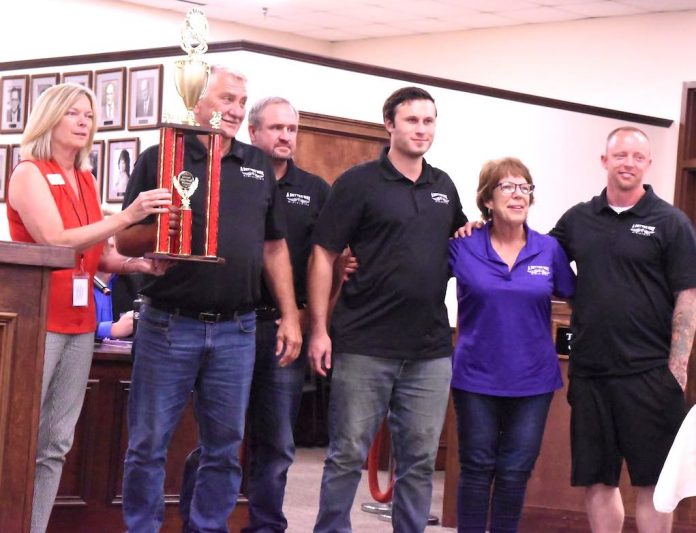
To the disapproval of several residents in the meeting, the Peachtree City Council on July 13 voted 3-to-2 to rezone nearly 39 acres off Redwine Road near Starr’s Mill school complex from R-12 to Limited Use Residential. The lot sizes for the 74 proposed homes remain at a quarter-acre each, giving a density of 1.9 units per acre. The property for years was a horse farm but was annexed into the city in 2020 with the R-12 zoning.
What drew the disapproval of several residents was the purpose of the rezoning before any more construction continues: “to allow for smaller building setbacks to support a larger variety of homes,” said the request from Senoia developer Jeff Lindsey Communities.
Though setbacks won’t change for lots adjacent to two existing residential subdivisions, the rezoning will bring much smaller setbacks for interior lots, while house sizes will increase dramatically.
The developer’s attorney described large “million-dollar homes” of more than 3,000 square feet on quarter-acre lots with as little as 10 feet total separating the side wall of one house from a neighboring wall.
Such expensive large homes set on relatively small lots were once known as McMansions. An entire subdivision of McMansions on the city’s southern border may represent a first for Peachtree City.
Residents decried shrunken back yards with little room for children to play. Also of concern: runoff water and more impervious surfaces with the larger houses.
Clint Holland and Frank Destadio voted against the rezoning, while Mike King, Phil Prebor and Mayor Kim Learnard voted for the change to LUR.
In other action, the council authorized buying an armored tactical vehicle — known as the BearCat — for $384,850 for delivery to the Police Department in about a year. The vehicle will provide half-inch steel armor protection to ward off up to .50 cal. bullets, hand grenades and anti-personnel mines — should any be encountered in Peachtree City.
Beautifying some city buildings also got some funding. The city will spend just under $134,000 to facade re-coating and restoration of City Hall, Fire Station 81 and Station 82.
[CORRECTION: Date of meeting in first paragraph has been corrected to July 13.]






Jeff Lindsey Communities is a disgrace. They have brought havoc to Coweta County, where rumor has it they have the county commissioners in their pockets. There is a sign with [deleted] advertising in their Twelve Parks development in Sharpsburg saying a nice recreation facility is coming in 2020, then 2021, then Summer 2022, you get the gist. Now is Summer 2023 and there is nothing but a half-way built building, no pool, no tennis courts, no nothing, just dust and stones. It is pretty much the same in all their subdivisions. Beware, we need to be careful they don’t bring their [deleted] practices to Fayette County!
I wasn’t even aware Peachtree City had a problem with renegade urban assault golf carts!
Got to be prepared for those Moms for Liberty groups that watch Fox News.
Dubbed The Pickleball Peacekeeper, this machine can heat pizza and grant zoning variances while removing speed bumps.
Way to go. They won’t spend 200k on a new boardwalk that we all use but they will spend 385k on an armored vehicle that might get used at some point by somebody maybe.
They’ll probably sink their new Armored Tactical Vehicle in the swamp where the flat Creek boardwalk used to be.
So at a time when the Mayor and some on PTC Council are skirting zoning ordinances with multiple exceptions made outside of transparent processes, it appears they are not content with the slow pace of converting PTC into a clone of north Atlanta suburbs.
Thanks to a developer who wants to build large houses on lots that barely contain the four walls, they have their “Hold my beer” moment.
In one vote, we get 70 large homes with less space between them than two women with their arms outstretched. They’ll be able to borrow a cup of sugar from their neighbor by leaning out a window.
It’s not an apartment complex, but Mayor Learnard and the two retiring Council members King and Prebor have again changed zoning to satisfy high-density developers and their urban PTC vision.
As always, follow the money.
It boggles the mind that anyone would spend a million dollars on a “slightly detached” townhome.
People hate yard work. All you have to do is ride around…1 out of 4 folks don’t care.
People who own a million-dollar home can probably afford to pay for lawn care.
Yet they choose not to.